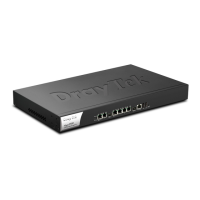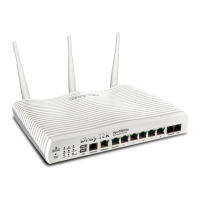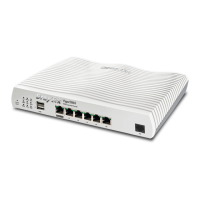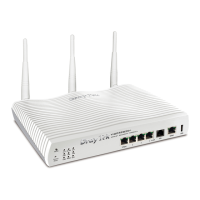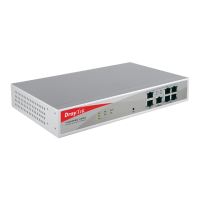Do you have a question about the Draytek Vigor3900 Series and is the answer not in the manual?
Guides on connecting devices and physical installation of the router, including rack mounting.
Instructions on how to change the administrator password for securing router access and configuration.
Guides users through a step-by-step process to configure basic internet connection settings.
Explains how to set up load balancing across multiple WAN connections for improved network performance.
Instructions for establishing secure LAN-to-LAN IPSec VPN tunnels between Vigor3900 and other routers.
Demonstrates configuring VPN load balancing between Vigor3900 and other routers for increased bandwidth and redundancy.
Covers advanced settings for WAN connections, including general setup and profile configuration.
Explains general settings for WAN profiles, including connection modes and multi-WAN functionality.
Configures traffic assignment based on protocol, IP, or port to specific WAN interfaces for load balancing.
Configuration options for Local Area Network settings, including general setup and IP routing.
Network Address Translation settings for mapping private IPs to public IPs, enabling internet access and security.
Forwards incoming traffic on specific ports to internal servers or hosts, exposing services to the public domain.
Controls packet allowance and denial, offering packet filtering, DoS defense, and content filtering for network protection.
Sets up IP, Application, and URL filters by grouping objects to create a robust firewall for computer protection.
Detects and mitigates Denial of Service (DoS) and vulnerability attacks by inspecting incoming packets.
Manages user accounts and profiles for internet access, enabling granular control over network usage.
Configures the router for high availability, ensuring continuous operation through failover between master and slave devices.
Manages VPN connections and remote access, supporting various VPN protocols for secure network extension.
Guides users through setting up VPN client configurations for LAN-to-LAN connections using a wizard.
Guides users through setting up VPN server configurations for LAN-to-LAN connections using a wizard.
Allows creation and management of VPN profiles using IPSec or PPTP protocols, supporting up to 500 tunnels.
Provides secure and flexible solutions for remote access to network resources via SSL VPN.
Monitors, analyzes, and allocates bandwidth for network traffic, prioritizing critical applications using QoS.
Manages system settings, including administrator password, configuration backup, firmware upgrades, and rebooting.
Allows setting a new password for accessing the router's Web User Interface (WUI).
Restarts the router using current, factory default, or customized configurations to apply settings or resolve issues.
Guides on downloading and upgrading the router's firmware to the latest version from DrayTek's website.
Provides tools to check router status, databases, and routing information for troubleshooting.
Verifies the router's hardware status by checking power, cable connections, and LED indicators.
Ensures computer network settings (IP, DNS) are correctly configured for proper network connectivity.
Uses the ping command to check the router's link status and network connectivity from a computer.
Verifies that ISP-provided settings are correctly configured for internet access, checking online status.
Resets the router to factory default settings via software or hardware to resolve connection or configuration issues.
| Brand | Draytek |
|---|---|
| Model | Vigor3900 Series |
| Category | Network Hardware |
| Language | English |

